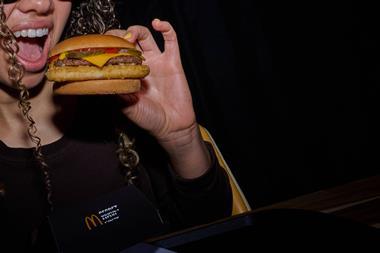The rise of the discounters this year has been nothing short of extraordinary. At 3.1% Aldi's market share is now close to that of Waitrose (3.6%).
To some extent, the discounters have been filling up the space left by Kwik Save's demise, in the same way that Iceland and Morrisons have been making good on the ground they lost, along with the plot, following the departure of Malcolm Walker and the acquisition of Safeway respectively.
But the rise of the discounters is not a sudden phenomenon. So what was the tipping point? The recession, obviously, has been a huge factor. Second, as I've said before, the discounters - instead of slugging it out on below-cost booze promotions - have spotted the big margins made by supermarkets on fruit and veg, as a perusal of our one-off Discounter 33 special shows.
But the real revelation of our survey (see p38) is that the discounters are, aside from fruit and veg, significantly more expensive than the Big Four. Supermarket execs have been saying this for some time. Nonetheless, it's surprising that it's been left to The Grocer to provide substantive evidence. (As well as giving Aldi and Lidl free advertising, Tesco's isolated price comparison ads were never likely to convince shoppers. No wonder it's switched to Des, though even here it's not particularly convincing.)
Of course, the discounters will counter that they don't compete on price. It's about quality, they say, at a discount price. But if quality was the real battleground, consumers would be responding to Waitrose's increasingly heavy promotion; and Aldi would have rebranded as Trader Joe.
No. The rise of the discounters is about perception. Forget brilliant and simple advertising, forget Paul Foley's one-man PR machine, forget a complacent and predominantly middle-class media. The mere fact they're called discounters means Aldi and Lidl are 1-0 up in this recession before we've kicked off.
To some extent, the discounters have been filling up the space left by Kwik Save's demise, in the same way that Iceland and Morrisons have been making good on the ground they lost, along with the plot, following the departure of Malcolm Walker and the acquisition of Safeway respectively.
But the rise of the discounters is not a sudden phenomenon. So what was the tipping point? The recession, obviously, has been a huge factor. Second, as I've said before, the discounters - instead of slugging it out on below-cost booze promotions - have spotted the big margins made by supermarkets on fruit and veg, as a perusal of our one-off Discounter 33 special shows.
But the real revelation of our survey (see p38) is that the discounters are, aside from fruit and veg, significantly more expensive than the Big Four. Supermarket execs have been saying this for some time. Nonetheless, it's surprising that it's been left to The Grocer to provide substantive evidence. (As well as giving Aldi and Lidl free advertising, Tesco's isolated price comparison ads were never likely to convince shoppers. No wonder it's switched to Des, though even here it's not particularly convincing.)
Of course, the discounters will counter that they don't compete on price. It's about quality, they say, at a discount price. But if quality was the real battleground, consumers would be responding to Waitrose's increasingly heavy promotion; and Aldi would have rebranded as Trader Joe.
No. The rise of the discounters is about perception. Forget brilliant and simple advertising, forget Paul Foley's one-man PR machine, forget a complacent and predominantly middle-class media. The mere fact they're called discounters means Aldi and Lidl are 1-0 up in this recession before we've kicked off.
















No comments yet